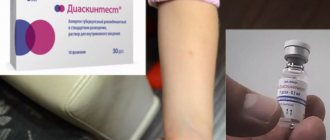All vaccinations are classified into mandatory and those that are optional. ADS-M belongs to the first group.
People have different attitudes towards this vaccine. Some people refuse immunization for fear of developing adverse reactions.
Before making such a decision, you need to consider what the ADS-M vaccine is: what it protects against and how it is tolerated.
"ADS-M-Anatoxin" - a drug for the prevention of diphtheria and tetanus
The drug is diphtheria-tetanus toxoid, purified, adsorbed with a reduced content of antigens, liquid. Combined bivalent vaccine
, Russia.
Protects against diseases: tetanus, diphtheria. The administration of the drug causes the formation of specific antitoxic immunity.
Suitable for: children over 6 years old, teenagers and adults.
Included in the national calendar of preventive vaccinations in Russia.
Advantages of the ADS-M-Anatoxin vaccine
- vaccination with the ADS-M-Anatoxin vaccine guarantees a high degree of protection against two dangerous infections simultaneously
- administration of the ADS-M-Anatoxin vaccine is a low incidence of local reactions compared to another vaccine with a higher content of toxoids
- The introduction of the ADS-M-Anatoxin vaccine causes the formation of a stable immune memory in the child’s body. During revaccination, rapid formation of antitoxins occurs in high concentrations.
- it is possible to use the ADS-M-Anatoxin vaccine for emergency vaccination within 20 days in case of injury and contact with the ground, in case of contact of a child with a sick person, in epidemic foci
- the ADS-M-Anatoxin vaccine can be administered simultaneously (on the same day) with any inactivated vaccines and live chickenpox vaccine, provided injections are made into different parts of the body
Why do they do it?
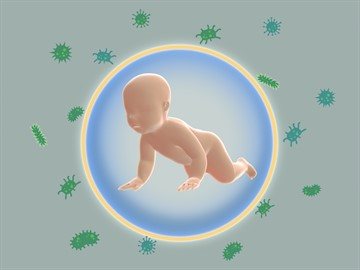
To protect against deadly diseases, vaccinations are carried out. This procedure involves introducing into the body a material that stimulates the production of antibodies to a specific pathology. This contributes to the formation of stable immunity.
The ADS-M vaccination can be deciphered as follows: adsorbed diphtheria-tetanus vaccine . The letter “M” is placed to indicate a reduced number of components of the product. ADS-M is used to immunize children and adults against tetanus and diphtheria.
These pathologies are very dangerous and common. Tetanus is caused by the bacterium Clostridium tetani. It can be infected through deep cuts or punctures of the skin. In an oxygen-free environment, the pathogen begins to actively multiply and secrete a toxin - tetanospasmin.
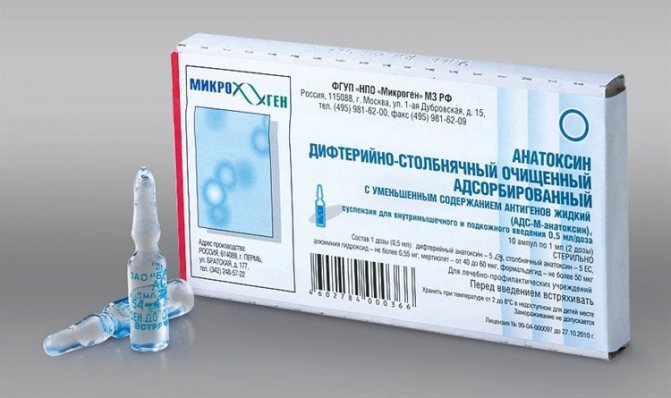
Vaccine ADS-M
This substance enters the brain and spinal cord through the bloodstream, causing severe spasms of the muscles of the face, back, neck, and convulsive conditions. The attacks are accompanied by severe pain.
If the bacterium infects the respiratory organs, death occurs. Tetanus is very difficult to treat. With timely assistance, recovery lasts about three months.
Pathology can lead to the following consequences:

- pulmonary edema;
- muscle fiber rupture;
- pneumonia;
- paralysis;
- heart attack;
- bronchitis;
- fractures;
- thrombosis.
The causative agent of diphtheria is Loeffler's bacillus. The pathogen affects the larynx, eyes, trachea, nose, mouth. The bacterium causes blockage, swelling and necrosis of tissue.
You can become infected with diphtheria in different ways:
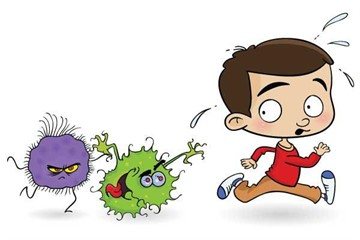
- through food;
- airborne;
- household
The pathology is difficult to treat. With timely assistance, recovery occurs within a week. The rehabilitation period lasts at least a month.
Diphtheria can lead to the following complications:
- asphyxia;
- paralysis;
- myocarditis.
The drug DTP differs from ADS-M in that it contains a pertussis component and a higher concentration of diphtheria and tetanus toxoids. These vaccines are interchangeable.
Scheme and method of administration of the vaccine "ADS-M-Anatoxin"
"ADS-M-Anatoxin" is administered intramuscularly to adults into the anterior outer part of the thigh, and to children and adolescents - deep subcutaneously into the subscapular region at a dose of 0.5 ml. Before vaccination, the ampoule must be thoroughly shaken until a homogeneous suspension is obtained.
"ADS-M-Anatoxin" is used:
- For vaccination of children 6-7 years of age and older who have not previously been vaccinated against diphtheria and tetanus. The vaccination course consists of two vaccinations with an interval of 30-45 days. Reducing the interval is not allowed. If it is necessary to increase the interval, the next vaccination should be carried out as soon as possible. The first revaccination is carried out 6 - 9 months after the completed vaccination once, the second revaccination is carried out at an interval of 5 years. Subsequent revaccinations are carried out in accordance with paragraph 2.
- For planned age-related revaccinations at 6-7 and 14 years of age, then every subsequent 10 years without age limitation. Adults vaccinated with tetanus toxoid (TA) less than 10 years ago are vaccinated with AD-M toxoid.
- As a replacement for DTP vaccine (DTa toxoid) in children with severe general reactions or post-vaccination complications to these drugs. If a reaction has developed to the first vaccination with DTP vaccine (ADS-anatoxin), then the second vaccination is carried out with “ADS-M-Anatoxin” no earlier than 3 months later. If a reaction has developed to the second vaccination with DTP vaccine (DTa toxoid), then the course of vaccination against diphtheria and tetanus is considered completed. In both cases, the first revaccination with ADS-M-Anatoxin is carried out after 9-12 months. If a reaction has developed to the third vaccination with DTP vaccine (ADS-anatoxin), the first revaccination with “ADS-M-Anatoxin” is carried out after 12-18 months.
- To carry out a course of vaccination for adults who have not previously been reliably vaccinated against diphtheria and tetanus, a full course is carried out (two vaccinations with ADS-M-Anatoxin with an interval of 30 days and revaccination after 6-9 months).
Features of application
The use of each of these vaccines has clear age and time limits.
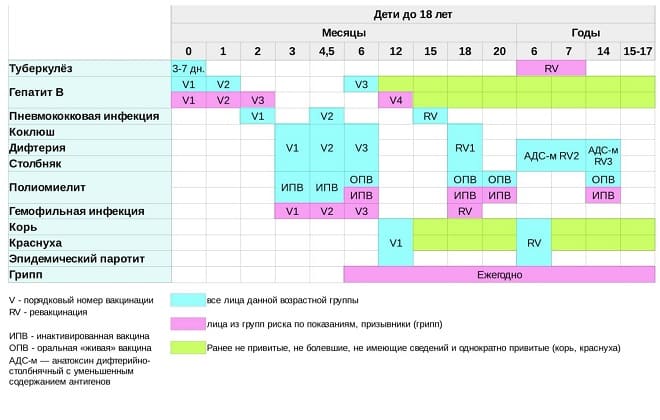
Young children should be vaccinated with DTP vaccine four times in accordance with the national calendar - at 3, then 4 and 6 months, and the last vaccination - at 1.5 years. At this age, the body's production of antibodies to whooping cough is especially important, since it itself and its complications pose the greatest danger to young children. If vaccination according to the calendar is impossible or undesirable, the vaccination schedule should be drawn up by an immunologist or pediatrician.
ADS-M vaccinations are given in older childhood and adulthood, when whooping cough no longer has such threatening consequences. Revaccination is aimed at maintaining and strengthening the already existing immune response to 2 infections - tetanus and diphtheria, as well as the formation of a primary one - if for some reason DPT vaccination has not been previously carried out. To maintain immunity at the required level, ADS-M vaccination must be done every 10 years.

Both DTP and ADS-M are administered to the body as an injection. For children, both vaccinations are carried out through intramuscular injection - into the thigh or shoulder, but starting from adolescence and older, ADS-M is administered subcutaneously to the patient in the back area - under the scapula.
The body may react painfully to the introduction of the vaccine: discomfort, pain and tightness at the injection site, upset stomach and appetite disturbances, and often fever. These reactions are considered normal and are not dangerous for the patient, but both vaccines are recommended to be administered against the background of antipyretic and pain medications to reduce discomfort and eliminate the likelihood of febrile seizures.
IMPORTANT: Do not use in pregnant or lactating women
Immunization of pregnant women with the ADS-M vaccine is not allowed. Vaccination of women of childbearing age is carried out in the absence of pregnancy and only if the woman agrees to be protected from conception within 1 month after vaccination. Breastfeeding women can be vaccinated if the benefits of vaccination outweigh the possible risks. Vaccination of children aged 4 to 6 years may be ineffective due to the peculiarities of the response of the children's immune system.
Administration of ADS-M should be postponed in case of acute febrile illness in a child.
Contraindications
Only a doctor can decide whether ADS-M-Anatoxin is suitable for vaccination
ADS-M is contraindicated if there is a history of an allergic reaction to any component of the vaccine, including aluminum and formaldehyde.
Contraindications for ADS-M vaccination:
- severe reaction or post-vaccination complication to a previous vaccine administration
- acute infectious and non-infectious diseases - vaccinations are carried out no earlier than 2-4 weeks after recovery. For mild forms of disease (rhinitis, mild hyperemia of the pharynx, etc.), vaccination is allowed after the disappearance of clinical symptoms
- chronic diseases - vaccinations are carried out upon achieving complete or partial remission
- neurological changes - vaccinated after progression of the process has been ruled out
- allergic diseases - vaccinations are carried out 2 - 4 weeks after the end of the exacerbation, while stable manifestations of the disease (localized skin phenomena, hidden bronchospasm, etc.) are not contraindications to vaccination, which can be carried out against the background of appropriate therapy
- immunodeficiencies, HIV infection, as well as maintenance course therapy, including steroid hormones and psychopharmaceuticals, are not contraindications to vaccination
- In order to identify contraindications, on the day of vaccination, the doctor conducts a survey and examination of those vaccinated with mandatory thermometry. When vaccinating adults, preliminary selection of persons to be vaccinated is allowed, with their interview by the medical worker conducting the vaccination on the day of vaccination. Persons temporarily exempt from vaccination must be monitored and registered and vaccinated in a timely manner
Vaccinations according to epidemiological indications : non-immune persons with the diseases specified in the section “Contraindications for use”, who are in direct contact with patients with diphtheria (family, class, dorm room, etc.), can be vaccinated according to the conclusion of a specialist until recovery (remission) ) against the background of appropriate therapy.
Risk of post-vaccination complications
As with any other vaccine, in rare cases allergic reactions to vaccine components are possible. These complications are not related to the properties of the vaccine, but to the amount of excipients in specific preparations, whether the child is allergic to them and, in some cases, non-compliance with vaccination rules. It is significant that, according to statistics of post-vaccination complications in the United States, even severe allergic reactions to DTP vaccines have not led to serious consequences in any case since 1978, taking into account the fact that about 80 million vaccinations were given during this period. Possible specific complications of DTP vaccines include neurological complications, which are extremely rare. It is assumed that they may be caused by the fact that the toxins of pertussis bacillus (even inactivated) in combination vaccines tend to irritate the meninges of an extremely small proportion of susceptible children. Complications in the form of encephalopathy are less than 1 case per 300 thousand vaccinated people.
Currently, in the world, convulsions without fever are not considered a complication of vaccination. Research conducted in Great Britain in 1960-1970. indicate the same frequency of seizures in vaccinated and unvaccinated children. Moreover, the first manifestations of diseases such as epilepsy, organic damage, and are associated with vaccination only by a temporary factor.
The development of afebrile seizures indicates the presence of an organic lesion of the nervous system in the child, which was not taken into account and identified or could not be identified before vaccination for objective reasons. Therefore, in the event of afebrile seizures, a comprehensive neurological examination is necessary to make a diagnosis.
Possible side effects
"ADS-M-Anatoxin" is one of the least reactogenic drugs. Reactions to the drug occur extremely rarely. Some vaccinated people may develop short-term general (fever, malaise) and local (pain, hyperemia, infiltration, swelling) reactions in the first two days. Considering the possibility of developing immediate allergic reactions (Quincke's edema, urticaria, polymorphic rash, anaphylactic shock) in particularly sensitive individuals, vaccinated individuals are provided with medical supervision for 30 minutes.
Adverse reactions
If vaccination is carried out with the DPT vaccine, then it should be remembered that vaccines are the most reactogenic, “heavy” childhood vaccines. On average, post-vaccination reactions occur in a third of vaccinated people, and not for every vaccination. They are manifested by a moderate increase in body temperature and mild malaise within 24 hours after vaccination. As a rule, all adverse events when administering the DPT vaccine develop no later than 72 hours (3 days) after vaccination and last no more than 48-72 hours.
Other types of tetanus vaccines have very low reactogenicity, that is, the development of post-vaccination reactions is very rare. Usually the vaccination is easily tolerated.
Local reactions such as redness of the injection site, swelling, induration or the formation of a “bump” are relatively common. These reactions are normal and go away on their own. Today, according to the World Health Organization, tetanus vaccination can cause a number of side effects that are not a serious health disorder and can be easily treated. Possible side effects of the tetanus vaccine include the following conditions: seizure activity, dermatitis, rhinitis, bronchitis and pharyngitis.
How to help your baby feel comfortable during vaccinations
Vaccination works better when the baby is calm and not afraid. To avoid scaring your child, try the following:
Distract and calm your baby, hug him, talk softly to him










